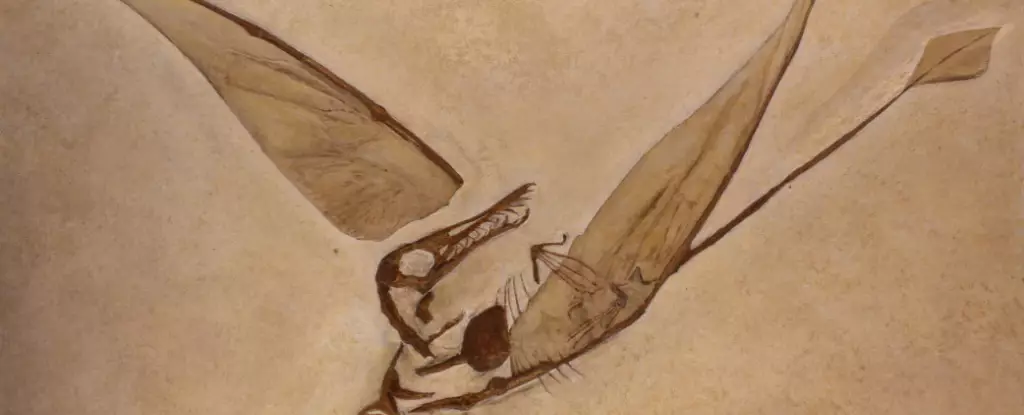Pterosaurs, the ancient flying reptiles that dominated the skies long before birds and bats, possessed a unique anatomy that set them apart from other vertebrates. While birds had feathers and bats had hollow bones, pterosaurs had a lattice-like structure in their tails that helped them take flight. This lattice-like structure played a crucial role in stiffening their tail vanes, which in turn guided them through the air with stability and control.
Recent research conducted by palaeontologist Natalia Jagielska and her colleagues sheds light on the importance of the tail vane in early pterosaur flight. By analyzing well-preserved fossils of pterosaurs, the researchers discovered a rod-like lattice structure within the tail vane that prevented it from bending out of shape. This cross-linked lattice not only reduced drag but also stabilized flight, giving pterosaurs a clear advantage in the evolutionary race of vertebrate flight.
The study also reveals clues about the evolutionary origins of the tail vane itself. According to Jagielska and her colleagues, the cross-linked lattice structure suggests that the tail vane of early pterosaurs developed from a single contiguous structure rather than a combination of scales or feather-like integuments. This evolutionary adaptation allowed pterosaurs to maneuver with precision and control in the skies, making them formidable predators and competitors.
While pterosaurs shared some similarities with birds and bats, such as the presence of a propatagium on their wings, they also had distinct features that set them apart. Unlike birds and bats, pterosaurs had oar-like tail vanes that played a crucial role in flight take-off and landing. The presence of fleshy folds at the end of the tail vane suggests a convergence with cetaceans, which use similar structures to glide through water. This unique combination of features allowed pterosaurs to dominate the skies during the Mesozoic era.
By studying the soft tissue structures preserved in well-preserved pterosaur fossils, researchers have gained valuable insights into the evolution of flight in these ancient flying reptiles. The discovery of the rod-like lattice structure in the tail vane sheds light on how pterosaurs achieved stability and control in flight, paving the way for future studies on the evolution of vertebrate flight. With continued research and analysis, scientists hope to unlock the secrets of pterosaur flight and gain a deeper understanding of the incredible diversity of life that once existed on Earth.



Leave a Reply